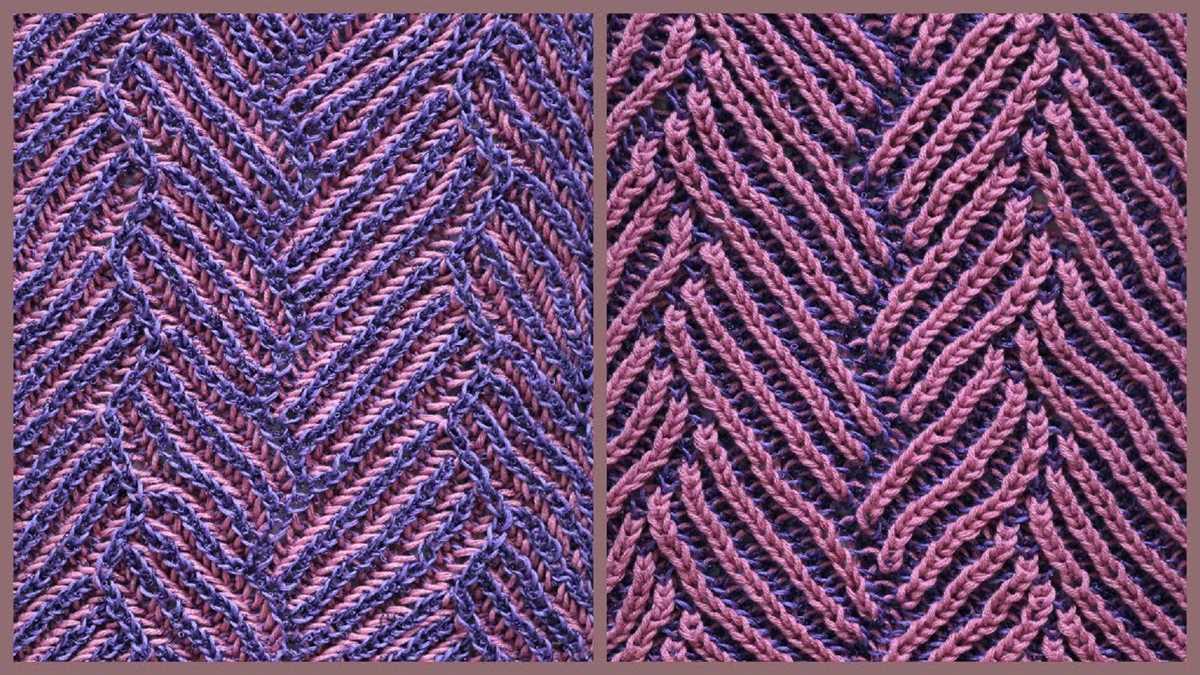
Knitting is a wonderful hobby that allows you to create beautiful and unique pieces of clothing and home decor. One technique that many knitters enjoy is using two colors in their patterns. This adds depth and interest to the finished product, making it stand out and impress everyone who sees it.
There are numerous knitting patterns that incorporate two colors, each with its own unique design and level of difficulty. From simple stripes to intricate fair isle designs, there is something for every level of knitter. Whether you’re a beginner looking to try something new or an experienced knitter ready for a challenge, this technique is sure to spark your creativity.
Using two colors in your knitting opens up a world of possibilities. You can choose contrasting colors to make a bold statement, or opt for complementary colors to create a more subtle and harmonious effect. The choice is yours, and the results are always stunning. Plus, the technique can be used on a variety of projects, including scarves, sweaters, blankets, and even socks.
Introducing two-color knitting
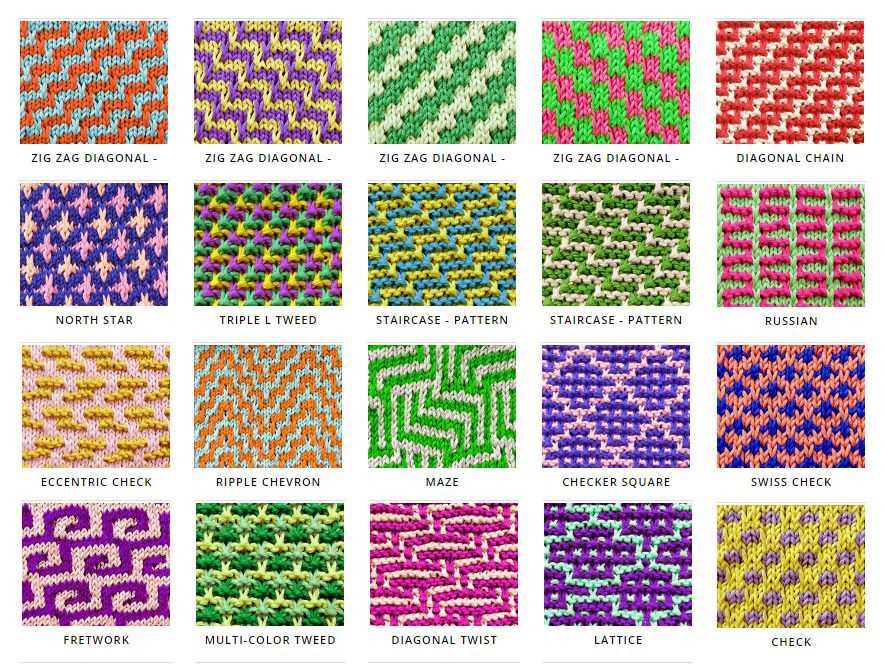
Two-color knitting, also known as stranded knitting or Fair Isle knitting, is a technique that allows you to create beautiful patterns using two different colors of yarn. Whether you’re a beginner or an experienced knitter, two-color knitting can add depth and complexity to your projects.
In two-color knitting, you work with two different colors of yarn in each row or round of your project. The yarns are carried along the back of your work, creating a float between the stitches. This float adds an extra layer of warmth to your finished project and creates a unique texture.
To get started with two-color knitting, you’ll need to choose your colors and yarns. It’s important to choose colors that contrast well with each other, so the pattern you’re knitting will stand out. You’ll also need to make sure the yarns you choose have a similar weight or thickness, so the tension remains consistent throughout your project.
Techniques for two-color knitting

There are several techniques you can use for two-color knitting. One common technique is to hold one color in your left hand and the other color in your right hand and alternate between them as you knit. This is known as “two-handed knitting” and helps to keep the yarns separated and prevent tangling.
Another technique is to “catch” the unused color every few stitches to create longer floats. This is called “stranding” and can be used to create patterns with larger blocks of color. Just make sure not to catch the yarn too tightly, as this can cause your fabric to pucker. Practice and experimentation will help you find the best tension for your knitting style.
With two-color knitting, the possibilities are endless. You can create intricate geometric patterns, floral motifs, or even pictures of animals and landscapes. The key is to start with a simple pattern and gradually increase your skills as you become more comfortable with the technique. So grab your needles, choose your colors, and start exploring the world of two-color knitting!
Benefits of using two colors in knitting
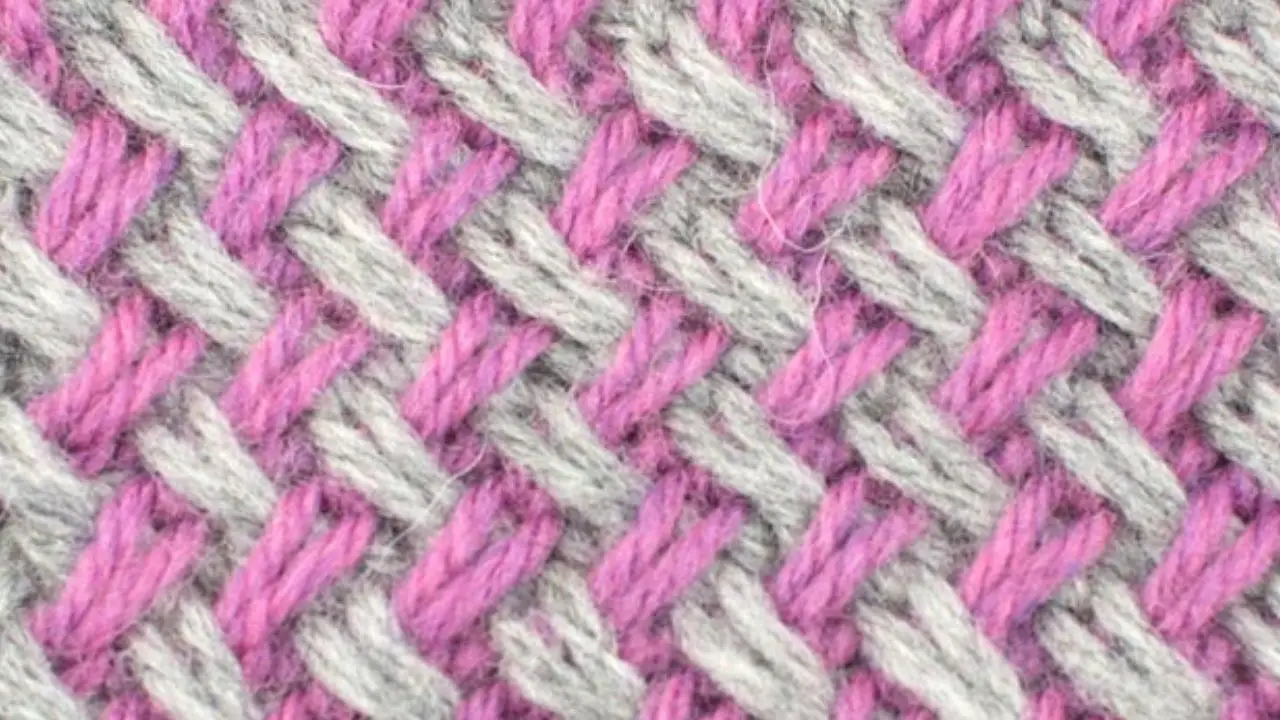
Using two colors in knitting can add a whole new dimension to your projects. It allows you to create intricate patterns and designs that are visually stunning and eye-catching. By combining different shades and hues, you can create depth and texture in your knitted items, making them more visually interesting and appealing.
One of the biggest benefits of using two colors in knitting is the ability to create beautiful colorwork. Colorwork allows you to create intricate patterns and images by combining different colors in your knitting. Whether you’re creating a Fair Isle sweater or a simple striped hat, using two colors can add a level of complexity and beauty to your projects that is hard to achieve with just one color.
Using two colors can also help you to develop your knitting skills. It requires more concentration and attention to detail, as you need to keep track of multiple yarns and colors. This can help improve your knitting technique and make you a more skilled and confident knitter.
Additionally, using two colors in knitting allows you to personalize your projects and make them unique. You can experiment with different color combinations and create one-of-a-kind pieces that reflect your own personal style and creativity. Whether you prefer bold and vibrant colors or soft and subtle shades, the possibilities are endless with two-color knitting.
In conclusion, using two colors in knitting offers a range of benefits, from creating visually stunning patterns to improving your knitting skills. So why not give it a try and discover the endless possibilities that await you with two-color knitting?
Choosing the right color combination
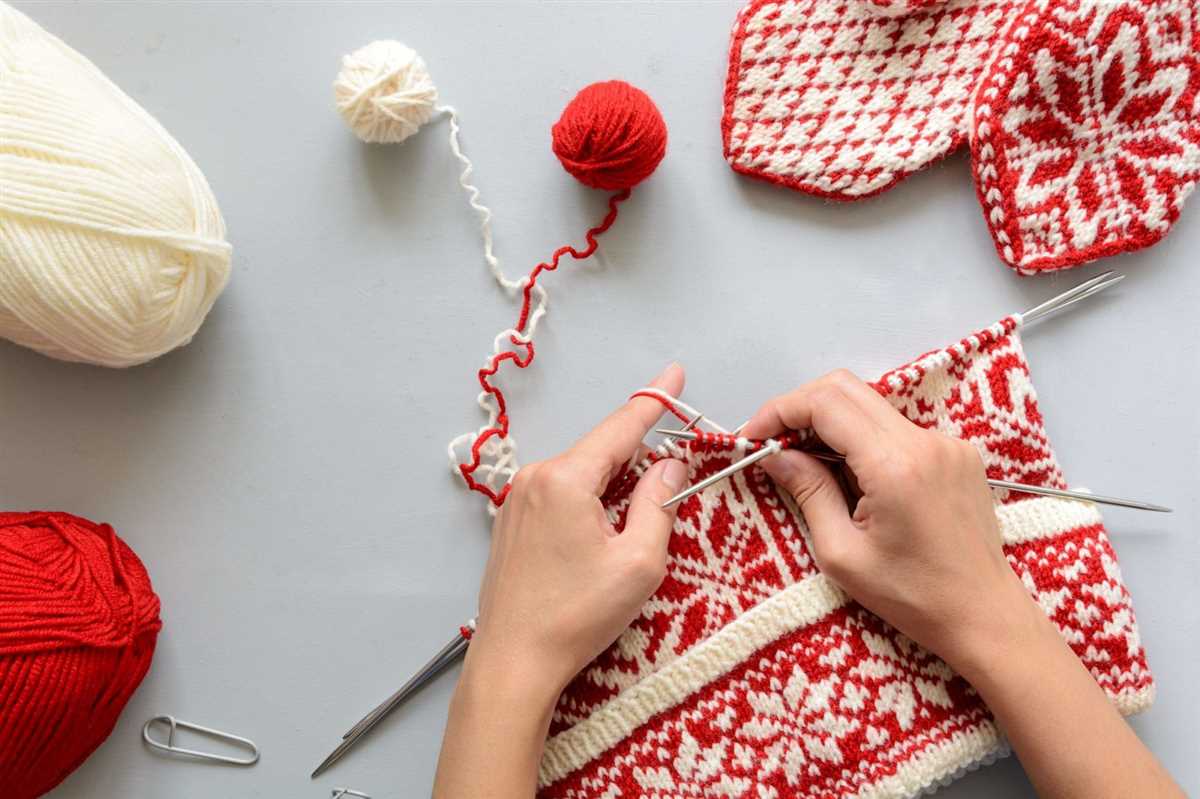
When it comes to knitting patterns using two colors, choosing the right color combination is crucial to achieve the desired outcome. The colors you choose will greatly impact the overall look and feel of your project, so it’s important to consider a few factors before making a decision.
Color theory: Understanding basic color theory can help you create harmonious and visually appealing combinations. Colors that are opposite each other on the color wheel, such as red and green or blue and orange, create a striking contrast. On the other hand, colors that are next to each other on the color wheel, such as blue and green or red and orange, provide a more subtle and complementary effect.
Contrast: Consider the level of contrast you want to achieve in your project. High contrast combinations, such as using black and white or dark and light colors, can create a bold and eye-catching design. On the other hand, low contrast combinations, like using different shades of the same color, result in a more subtle and understated look.
Intended purpose: Think about the purpose and intended use of your knitted item. If you’re making a garment or accessory that you want to stand out, opting for a vibrant or contrasting color combination can help achieve that. On the other hand, if you’re knitting something more subtle or neutral, choosing a monochromatic or analogous color scheme might be more appropriate.
Personal preference: Ultimately, the choice of color combination comes down to your personal taste and style. Experiment with different colors and combinations to find what you love. Don’t be afraid to step out of your comfort zone and try something new, as knitting with two colors opens up a world of creative possibilities.
Basic two-color knitting techniques
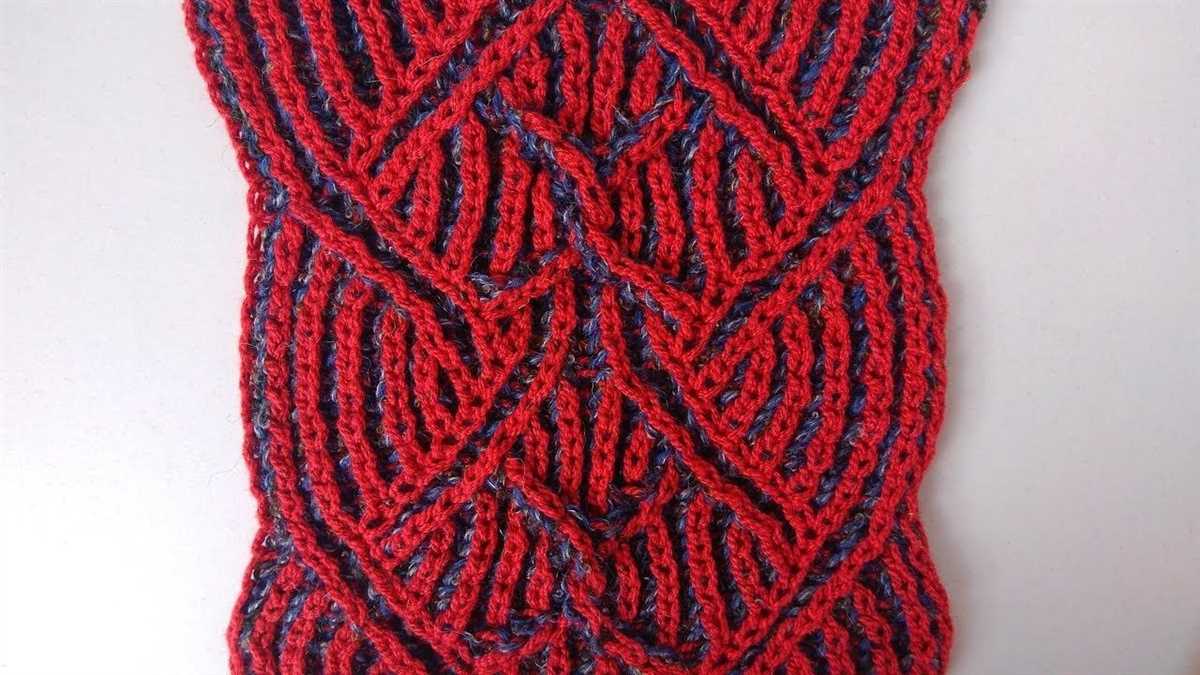
If you are interested in creating intricate and beautiful patterns in your knitting projects, learning the basics of two-color knitting can open up a world of possibilities. Two-color knitting, also known as stranded knitting or Fair Isle knitting, involves working with two different colors of yarn in the same row or round to create unique patterns and designs.
Choosing the right yarn: When working with two colors, it is important to choose yarn that has a similar weight and fiber content. This ensures that the finished fabric will have an even tension and drape. Additionally, using high-contrast colors can make your patterns stand out more.
Stranded knitting:
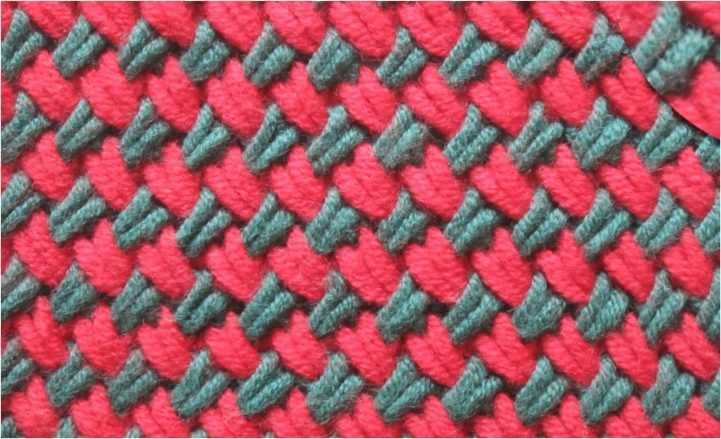
Stranded knitting is one of the most common techniques used in two-color knitting. In this technique, both yarns are carried along the back of the work while knitting with one color at a time. When switching between colors, the yarn not in use is carried loosely across the back of the work. It is important to maintain an even tension and avoid pulling the carried yarn too tightly, as this can cause the fabric to pucker.
Intarsia knitting: Another technique used in two-color knitting is intarsia knitting. Unlike stranded knitting, intarsia involves using separate bobbins or balls of yarn for each color block in the pattern. When switching colors, the yarn is twisted around each other to prevent holes from forming. This technique is commonly used for larger areas of color or geometric designs.
Chart reading:
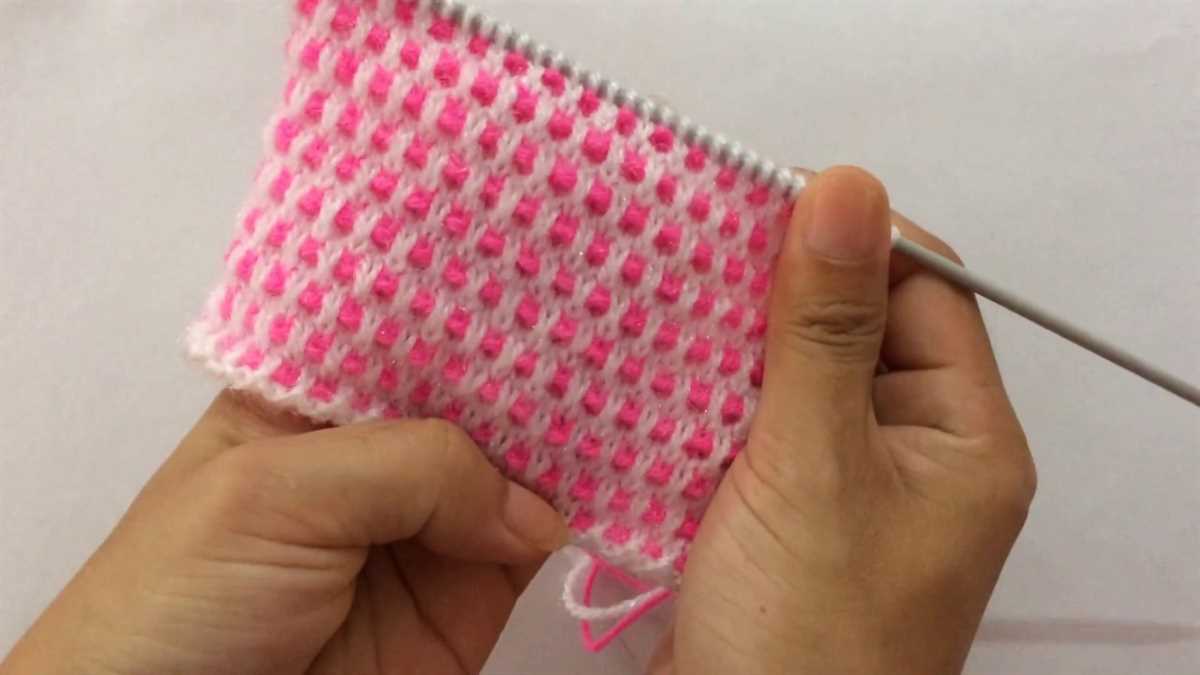
When working with two colors, it is often helpful to use a colorwork chart. A colorwork chart is a visual representation of the pattern, with each square representing a stitch and each color representing a different yarn. By following the chart, you can easily see which color to use for each stitch and create a cohesive design.
Blocking: After completing your two-color knitting project, it is important to block the fabric to even out the stitches and enhance the drape of the finished piece. Blocking involves soaking the fabric in water, gently squeezing out the excess moisture, and then shaping it to the desired dimensions. This step can help bring out the full beauty of your two-color knitting project.
With these basic techniques, you can start exploring the world of two-color knitting and create stunning, intricate designs in your knitting projects.
Creating Stripes with Two Colors
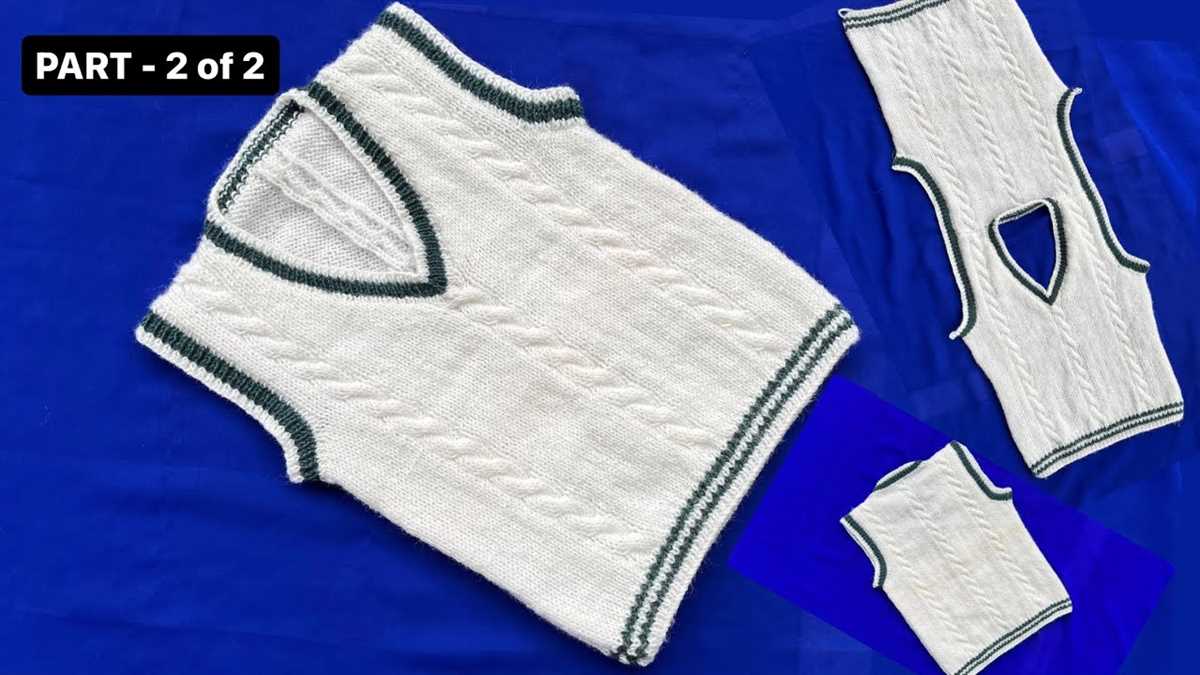
The use of two colors in knitting patterns can create beautiful stripes that add visual interest to your projects. Whether you’re knitting a sweater, scarf, or blanket, incorporating stripes can make your design stand out.
There are several techniques you can use to create stripes with two colors. One simple method is to alternate between the two colors, knitting a certain number of rows or rounds in one color, then switching to the other. This creates distinct stripes that are easy to see and can be as wide or narrow as you’d like. You can also experiment with different color combinations to achieve different effects, such as using complementary colors for a bold contrast or similar shades for a subtle gradient.
One popular technique for creating stripes is the “slip stitch” method. This involves knitting with one color and slipping stitches purlwise with the other color to create a raised line. This technique is often used in Fair Isle or stranded knitting, where multiple colors are carried along the back of the work. The slip stitch method adds texture and dimension to the stripes, giving them a unique look.
If you’re looking to create more intricate striped patterns, you can also try using different stitch patterns to create textural contrast between the stripes. For example, you could knit a few rows in stockinette stitch for a smooth stripe, then switch to a ribbed or garter stitch for a textured stripe. This can create a visually appealing pattern that adds depth and complexity to your knitted piece.
Regardless of the method you choose, it’s important to plan your stripes in advance and consider the width and placement of each stripe. You can create a color palette or use a color chart to visualize how different colors will look together and determine the desired width of each stripe. By planning ahead, you can ensure that your stripes are evenly distributed and create a cohesive design.
Incorporating Colorwork Motifs

One way to add interest and complexity to your knitting projects is by incorporating colorwork motifs. Colorwork refers to using multiple colors in one piece of knitted fabric to create patterns, pictures, or designs. This technique can be used to create stunning and unique garments, accessories, or even home decor items.
There are several techniques you can use to incorporate colorwork motifs into your knitting projects. One popular method is stranded knitting, also known as Fair Isle knitting. With this technique, you use two or more colors in the same row and carry the unused color along the back of the work. This creates a beautiful pattern on the front of the fabric. Stranded knitting is great for creating intricate designs and is often used in traditional Scandinavian or Fair Isle patterns.
If you prefer a more subtle approach to colorwork, you can try intarsia knitting. Intarsia involves knitting blocks of color separately, without carrying the yarn along the back of the work. This technique is often used to create larger, geometric designs or pictures on the fabric. It requires careful attention to detail and can be a bit more challenging than stranded knitting, but the results can be stunning.
Regardless of the colorwork technique you choose, it’s important to select the right colors for your project. Consider the overall look and feel you want to achieve. You can use contrasting colors for a bold and eye-catching design or opt for more subtle tones for a more understated effect. Experiment with different color combinations and swatch before starting your project to ensure you’re happy with the results.
When incorporating colorwork motifs into your knitting projects, it’s also important to pay attention to your tension. Colorwork can affect the overall gauge and fabric drape, so make sure to adjust your tension if needed. Additionally, take the time to properly secure your floats (the carried yarn on the back of the work) to prevent them from catching or snagging on anything.
- Experiment with different colorwork techniques to find the one that suits your style and skill level.
- Consider the overall look and feel you want to achieve when selecting colors for your colorwork motifs.
- Adjust your tension if needed and take care to secure your floats to ensure a professional finish.
Knitting Fair Isle Patterns
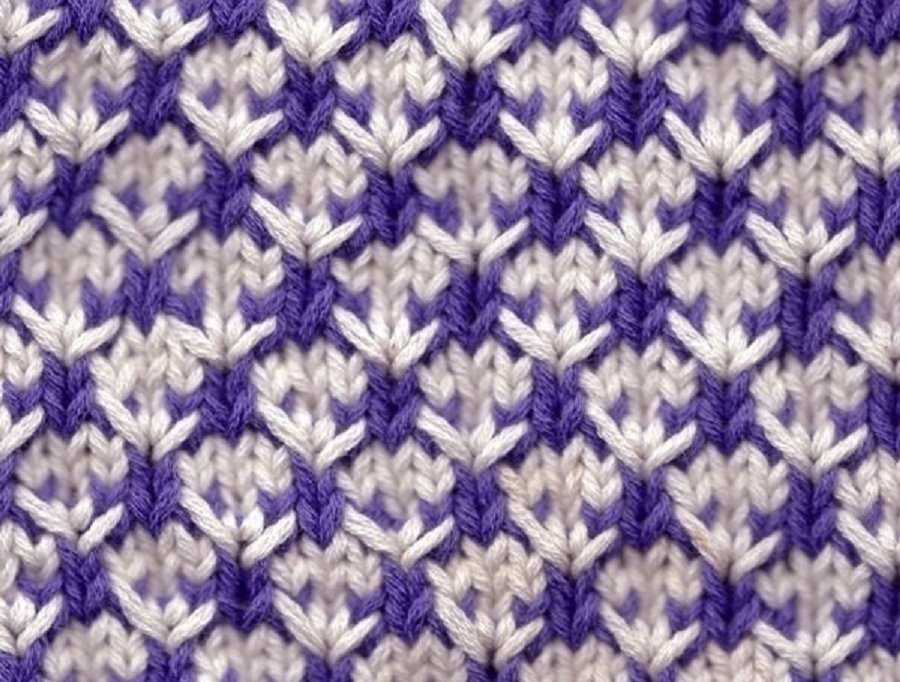
Fair Isle knitting is a technique that originated in the Fair Isle, a small island in Scotland. It involves knitting patterns using two or more colors to create beautiful and intricate designs. The patterns often incorporate motifs inspired by nature, traditional symbols, and geometric shapes.
Choosing Colors: When working on Fair Isle patterns, it is important to select colors that complement each other and create a harmonious overall design. Typically, one color is used as the main color, while the others are used for the contrasting motifs. The choice of colors can greatly affect the final appearance of the pattern, so it is advisable to experiment with different combinations.
Stranded Knitting Technique
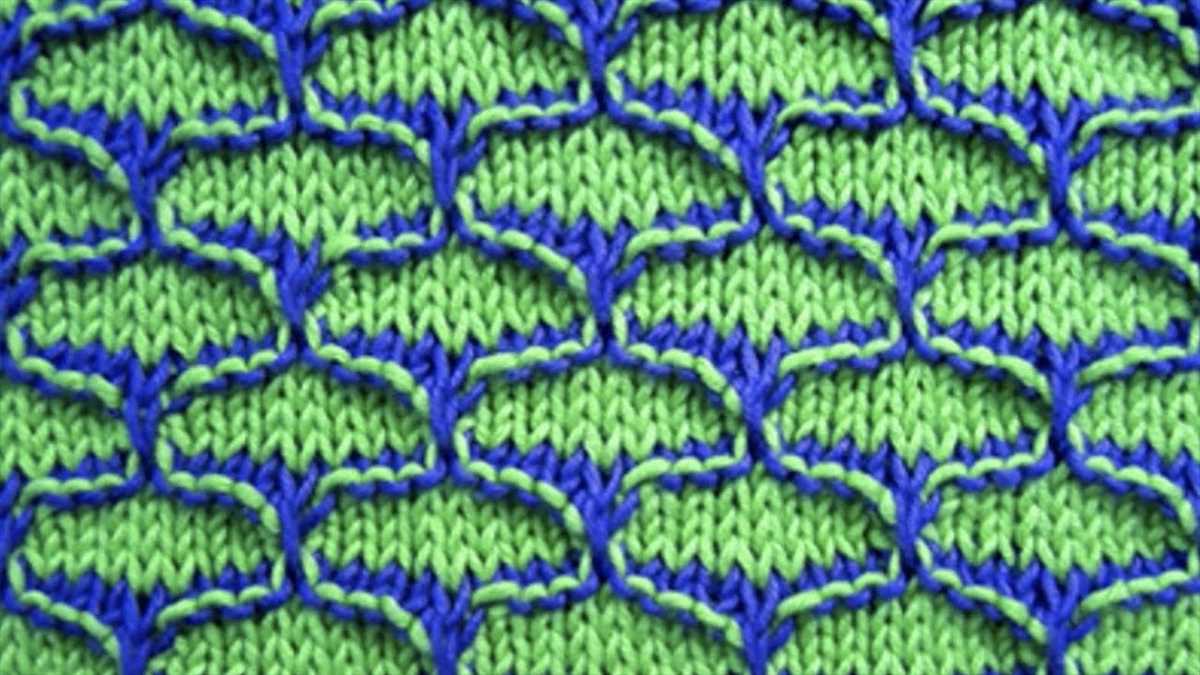
The most common technique used for Fair Isle knitting is stranded knitting, also known as stranded colorwork or two-color knitting. In this technique, both the main color and the contrasting color(s) are carried along the back of the work as they are alternately used in the pattern. The unused yarn is stranded across the wrong side of the fabric while working with the other color, resulting in a warm and thick fabric.
To achieve a successful Fair Isle pattern, it is important to maintain an even tension and avoid carrying the yarn too tightly or loosely. Knitters also need to be mindful of yarn dominance, where one color appears more dominant than the other. This can be adjusted by either holding one color slightly tighter or changing the position of the colors in the knitting process.
Popular Fair Isle Patterns
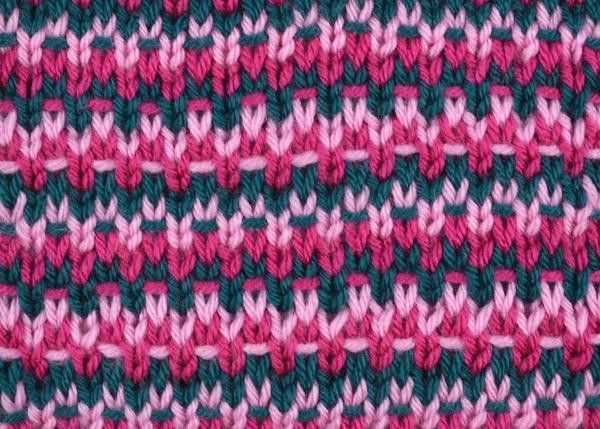
There are numerous Fair Isle knitting patterns available, ranging from simple designs suitable for beginners to intricate patterns for experienced knitters. Some popular Fair Isle patterns include traditional geometric designs such as diamonds, stripes, and snowflakes, as well as motifs inspired by nature like flowers, animals, and birds. These patterns can be found in various knitting resources, including pattern books, magazines, and online knitting communities.
Fair Isle knitting offers endless possibilities for creating unique and eye-catching designs. Whether you’re a beginner or an experienced knitter, trying out Fair Isle patterns can be a fun and rewarding knitting adventure. It allows you to explore the world of color and pattern, and create beautiful and cozy garments or accessories with your own hands.
Knitting stranded colorwork
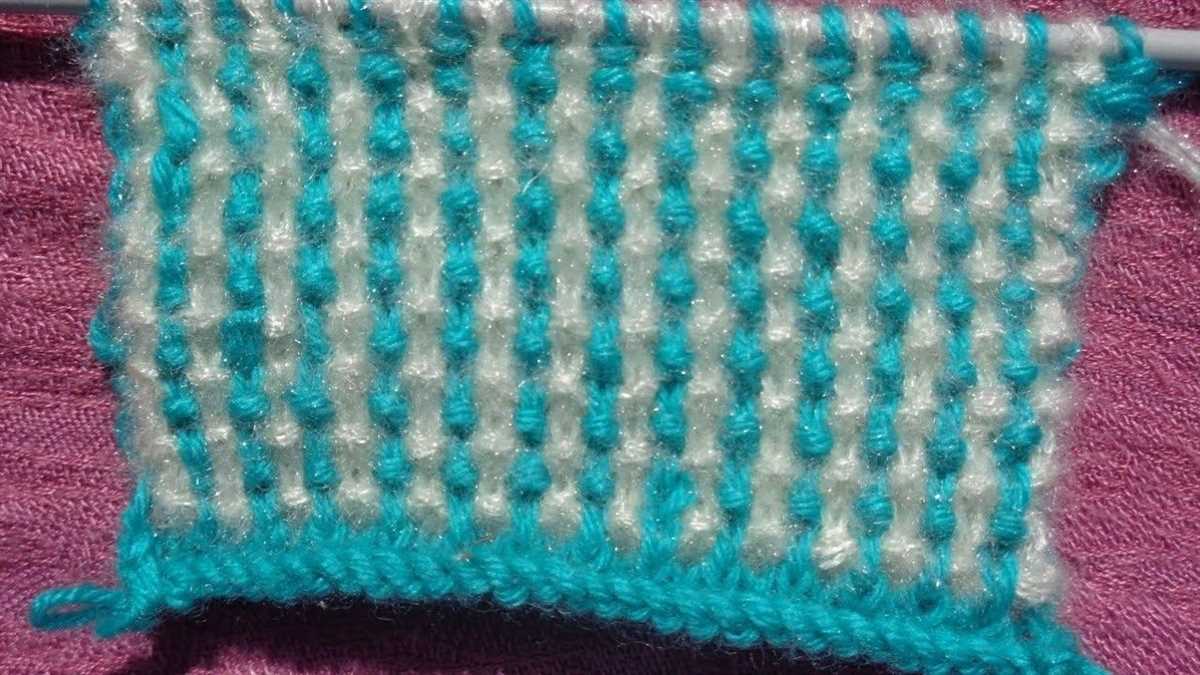
Knitting stranded colorwork, also known as Fair Isle or stranded knitting, is a technique that involves using two or more colors in the same row to create intricate patterns. This is achieved by carrying the unused yarn behind the work and knitting with the active color. The result is a beautiful design with contrasting colors that can be used to create stunning garments and accessories.
Choosing colors: When knitting stranded colorwork, it’s important to select colors that work well together and create the desired effect. Bold and contrasting colors often create the most eye-catching designs, but subtle color combinations can also be elegant. It’s a good idea to experiment with different color combinations before starting your project to see how they look together.
Knitting techniques: Knitting stranded colorwork requires some special techniques to ensure that the carried yarn doesn’t create too much tension in the fabric. One common technique is to hold one color in each hand, with one color in your right hand and the other in your left hand. This allows for smoother and more even tension between the two colors. Another technique is to twist the yarns around each other every few stitches to prevent them from tangling and creating loose loops.
Pattern choices: There are numerous knitting patterns available for stranded colorwork, ranging from simple geometric designs to intricate floral motifs. Some popular choices include traditional Fair Isle patterns, Nordic designs, and modern contemporary patterns. When choosing a pattern, it’s important to consider your skill level and the amount of time and effort you are willing to invest in the project.
Finishing touches: Once you have completed your stranded colorwork project, there are a few finishing touches that can make a big difference. Blocking the finished piece can help even out the tension and bring out the full beauty of the colorwork. Adding a lining to your garment or accessories can also help improve the durability and comfort of the finished item. Finally, make sure to weave in all the loose ends and secure them to prevent any unraveling.
Overall, knitting stranded colorwork can be a rewarding and enjoyable technique that allows you to create unique and beautiful pieces. With practice and patience, you can master this technique and create stunning designs that showcase your knitting skills.
Tips for successful two-color knitting
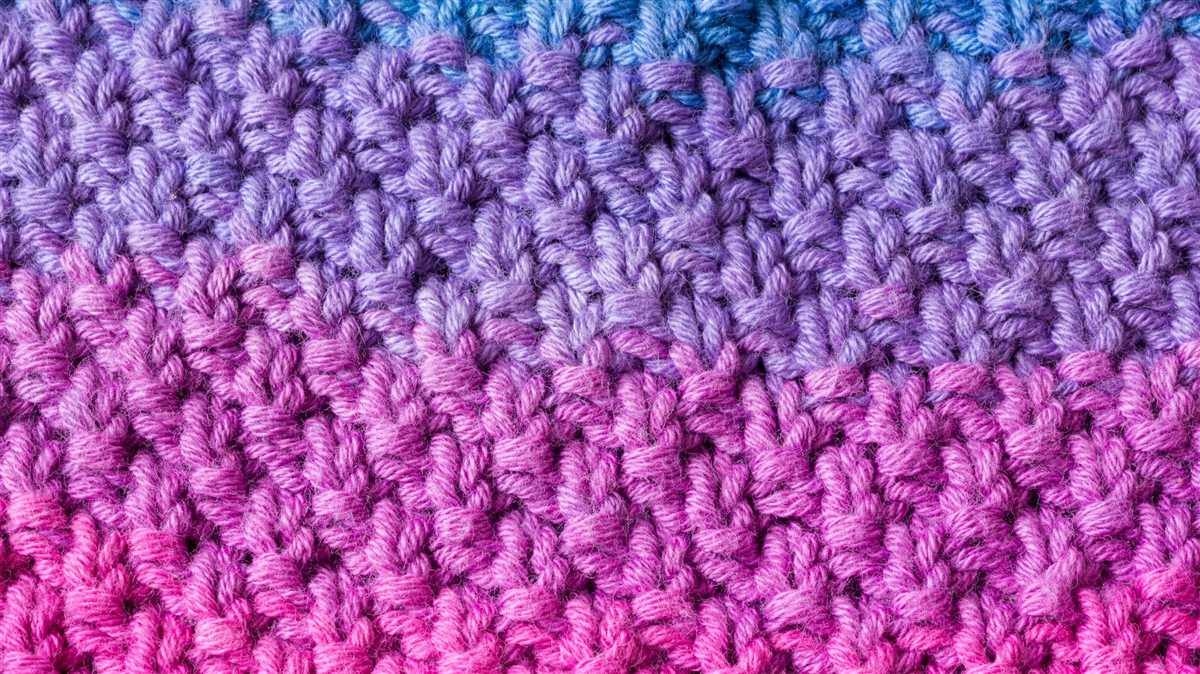
Two-color knitting, also known as stranded knitting or Fair Isle knitting, creates beautiful patterns by using two different colored yarns. It can be a bit challenging to achieve clean and even stitches when working with two colors, but with some tips and tricks, you can master this technique and create stunning knitted projects.
1. Choose the right yarn: When working with two colors, it is important to choose yarns that have similar weights and textures. This will ensure that your stitches look balanced and consistent. It is also helpful to select yarns that have good contrast, so that the colors pop and the pattern is clearly visible.
2. Tension is key: Maintaining consistent tension is crucial in two-color knitting. Make sure to hold your yarns at the same tension throughout your project to avoid loose or tight stitches. Experiment with different knitting styles and techniques to find the one that allows you to achieve the desired tension.
3. Catch floats: When switching between colors, you will have “floats” or strands of yarn not in use that run along the back of your work. It is important to catch these floats every few stitches to prevent them from becoming too long and creating a loose fabric. You can do this by twisting the working yarn and the float together on the wrong side of your work.
4. Use a swatch: Before starting a larger project, it is always a good idea to knit a swatch to check your tension and test the colorwork pattern. This will help you make any necessary adjustments before investing time and effort into the actual project.
5. Keep it simple: If you are new to two-color knitting, it is best to start with a simple pattern or design that uses only a few colors. This will allow you to practice the technique and get comfortable with working with two colors before attempting more complex patterns.
6. Practice color dominance: In two-color knitting, one color tends to dominate over the other, resulting in a more pronounced appearance. Experiment with different color combinations and placement to see which color you want to be more dominant in your design.
By following these tips, you will be well on your way to successful two-color knitting. With practice, you can create beautiful and intricate designs that will impress everyone with your knitting skills.
Inspiring two-color knitting projects
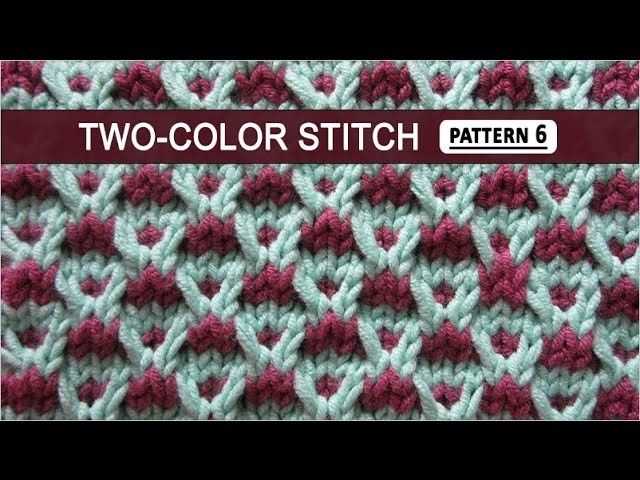
If you’re looking for some two-color knitting projects to try, here are a few ideas to get you started:
- Fair Isle Sweater: Create a bold and intricate design by incorporating multiple colors into a cozy sweater
- Colorful Scarf: Experiment with different patterns and color combinations to create a statement scarf
- Color-Block Blanket: Use two contrasting colors to create large blocks of color in a cozy blanket
- Striped Hat: Knit a striped hat using two colors to add a touch of whimsy to your winter wardrobe
These projects not only provide a great opportunity to practice your two-color knitting skills but also result in stunning and unique creations that are sure to impress. Don’t be afraid to experiment with different color combinations and patterns to create your own personalized designs.
Remember, two-color knitting is a versatile technique that can be used in a variety of projects, from garments to accessories. So grab your knitting needles and start exploring the world of two-color knitting today!